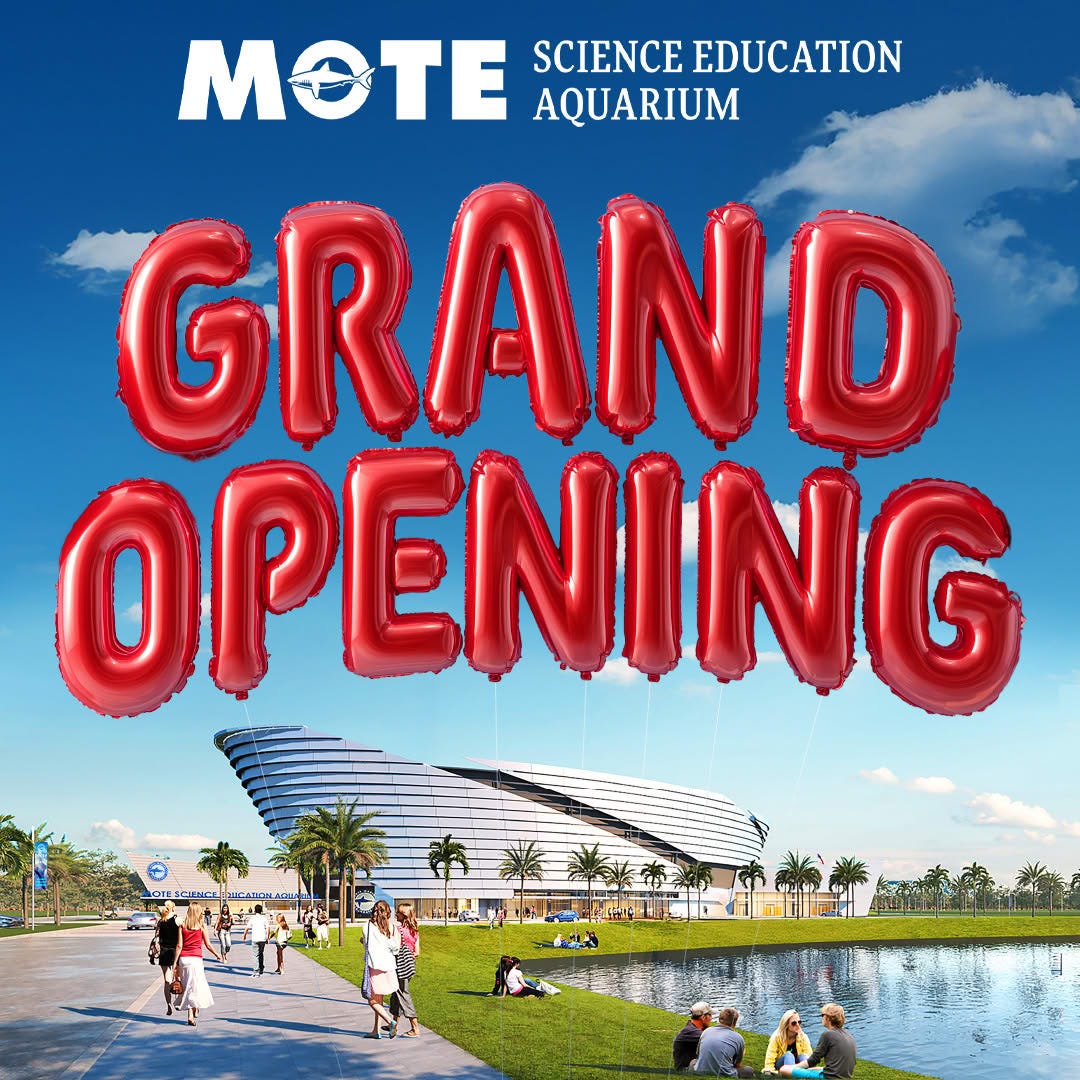Mote Science Education Aquarium Set to Open to the Public October 8
The Mote Science Education Aquarium (Mote SEA) is preparing to open its doors to the public on October 8, 2025, marking a new chapter for the Sarasota-based marine research institution. The state-of-the-art facility, located at 225 University Town Center Drive, will welcome visitors to experience its exhibits showcasing marine life, conservation, and ocean science.
To guarantee entry, tickets must be purchased online in advance. Reciprocal members and active duty military personnel may secure their admission in person. Members of Mote will receive exclusive early access beginning October 6, ahead of the public opening. Membership fees will increase after September 15, with renewals and new memberships available online.
Ahead of the opening, Mote SEA will host two special celebrations. On Friday, October 3, a VIP Grand Opening will take place at 4:45 p.m., followed by the main Illuminate the SEA Grand Opening Celebration at 6:00 p.m.
Founded in 1955 as the Cape Haze Marine Laboratory, Mote Aquarium has grown into one of Florida’s leading marine research and education institutions. Dr. Eugenie Clark, often called the “Shark Lady,” established the lab with a focus on shark biology, laying the foundation for decades of marine research. Over the years, the organization expanded its mission to include ocean conservation, fisheries enhancement, marine biomedical research, and public education.
The original laboratory was later renamed in honor of William R. Mote, a key supporter whose contributions helped sustain and expand the organization. In addition to its research, Mote Aquarium in Sarasota became a major attraction for residents and visitors, showcasing sharks, manatees, sea turtles, and other marine species while highlighting the importance of ocean stewardship.
With the launch of the new Mote Science Education Aquarium at University Town Center, Mote aims to expand its reach, offering larger and more interactive exhibits and educational opportunities. The new facility will serve as both a community resource and a destination for visitors from across the region, continuing the legacy of advancing marine science while inspiring future generations.

